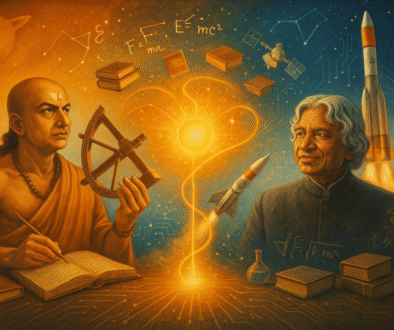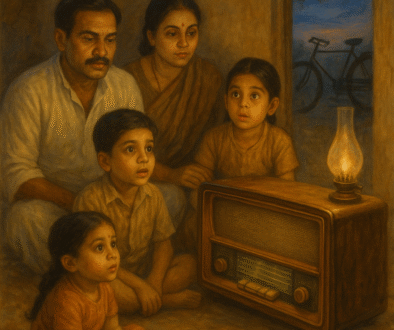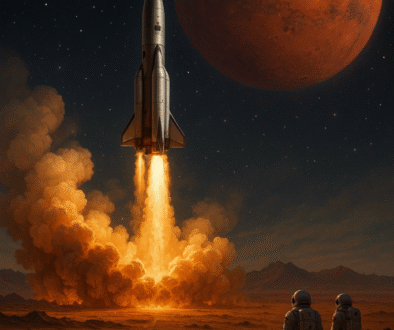Time: A Perceptibly Abstract Conundrum
What is Time?
Time, a widely exercised term, seems simple yet remains remarkably elusive. It questions everything—blinks of the past, present, and future; yesterday, today, and tomorrow—stretching beyond existence and confounding even the sharpest minds. Yet, it is an ever-present force, shaping the rhythms of music, the aging of life, and the slow transformation of landscapes. From the rise and fall of civilizations to the ticking of a clock, time governs all. Whether measured, felt, or studied, it remains an enigmatic dimension—both a silent observer and an active participant in the unfolding of existence, shaping the very fabric of reality.

Human Conventions of Time
Time is both a mystery and a masterpiece of human ingenuity. Though it exists independently of us, we have devised three interconnected systems to measure and organize it: calendar time, clock time, and natural time.
- Calendar time structures our lives into days, weeks, months, and years, influencing agriculture, history, religious festivals, and global events. Solar calendars like the Gregorian, lunar calendars like the Islamic, and lunisolar systems like the Hindu calendar reflect humanity’s attempt to align with celestial rhythms.
- Clock time divides each day into hours, minutes, and seconds, ensuring precision in daily routines, work, and global coordination. From ancient sundials and water clocks to today’s ultra-precise atomic clocks, humans have relentlessly refined timekeeping for accuracy and synchronization.
- Natural time, the oldest and most fundamental measure, is dictated by the Sun’s movement across the sky, the Moon’s phases, and the changing seasons. Despite digital schedules and time zones, we still rely on celestial cycles to mark solstices, equinoxes, and planetary motions.
These three systems, though distinct, seamlessly merge ancient wisdom with modern science, keeping humanity in sync with both the cosmos and our evolving world.
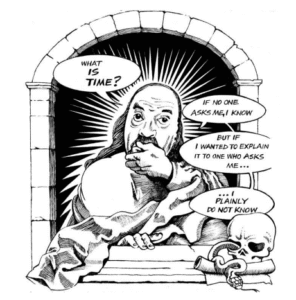
A Vivid Expression
Time is the heart of all music. Its essence lies in rhythm—the interplay of sound and silence within time. It provides the foundation upon which beats, tempo, and patterns emerge, shaping a composition’s movement and feel. In this way, time becomes the architect of music, crafting the framework upon which melodies and harmonies unfold.
Manifestations of Time
Time manifests itself across various dimensions, influencing life, matter, and the very fabric of the universe.
The Hidden Bell (Biology) – Beyond external time conventions, time also governs biological rhythms. The human body follows circadian cycles, regulating sleep, metabolism, and hormone production. These internal clocks, influenced by external cues like light and temperature, play a crucial role in maintaining health, energy levels, and cognitive function. Whether through the ticking of a clock or the silent rhythm within us, time remains an undeniable force shaping our existence.
The Revolutionary Clock (Chemistry) – Time dictates the transformation of matter, from fleeting molecular reactions to changes spanning millions of years. Reaction rates, equilibrium shifts, and molecular oscillations occur in rhythmic cycles, while radioactive decay serves as nature’s clock, marking the passage of time at atomic scales. On a grander scale, the slow formation of minerals, the aging of organic matter, and even the chemical evolution of the universe—from the Big Bang to the synthesis of elements in stars—demonstrate time’s profound role in shaping the material world.
Bending Reality (Physics) – In physics, time is a fundamental concept used to define and describe events. To pinpoint an event in the universe, three spatial coordinates (length, width, and height) are needed, along with one time coordinate—the fourth dimension.
Time played a key role in understanding planetary motion (Johannes Kepler), object motion (Galileo Galilei), and gravitation (Isaac Newton). Newton assumed time was absolute, flowing uniformly and independently of events. However, Albert Einstein’s thought experiments and theories of relativity revolutionized this notion, revealing that time is relative—it does not flow the same for all observers. This led to the discovery of time dilation, where time slows down for an observer in motion relative to a stationary one.
For example, when a photon bounces between two mirrors inside a stationary rocket, its path is vertical. But for an observer watching a moving rocket, the photon travels diagonally, covering a longer distance. Since the speed of light remains constant, time appears to slow down for those inside the rocket. This effect, confirmed through precise experiments with atomic clocks on fast-moving spacecraft, shows how time bends with motion and gravity.
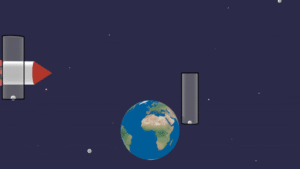
The Nature of Time
The nature of time remains an open debate. Many question whether time even exists as an independent entity or if it is merely an emergent phenomenon of change. This ambiguity fuels endless philosophical and scientific discussions. This uncertainty has inspired deep reflections:
- “The distinction between the past, present, and future is only a stubbornly persistent illusion.” — Albert Einstein
- “Time and space are like a stage on which the drama of the universe unfolds.” — Sir Isaac Newton
- “Time is a river. It speeds up in some places and slows down in others; it may even whirl around and flow backward.” — Stephen Hawking
- “Time is what happens when nothing else happens.” — Richard Feynman
- “The present is the only thing that has no end.” — Erwin Schrödinger
- “I am time, the great destroyer of the world, and I have come here to engage all people.” — Bhagavad Gita (11.32)
So…What is time?
From human-made conventions and vivid expressions to biological rhythms, chemical transformations, and the mysteries of physics, time is a paradox. Is it something we grasp, or does it grasp us? Whether organizing our daily lives, shaping music, or bending under the forces of relativity, time remains one of the greatest puzzles of existence. In the end, do we truly understand time? Perhaps only time itself holds the answer.



